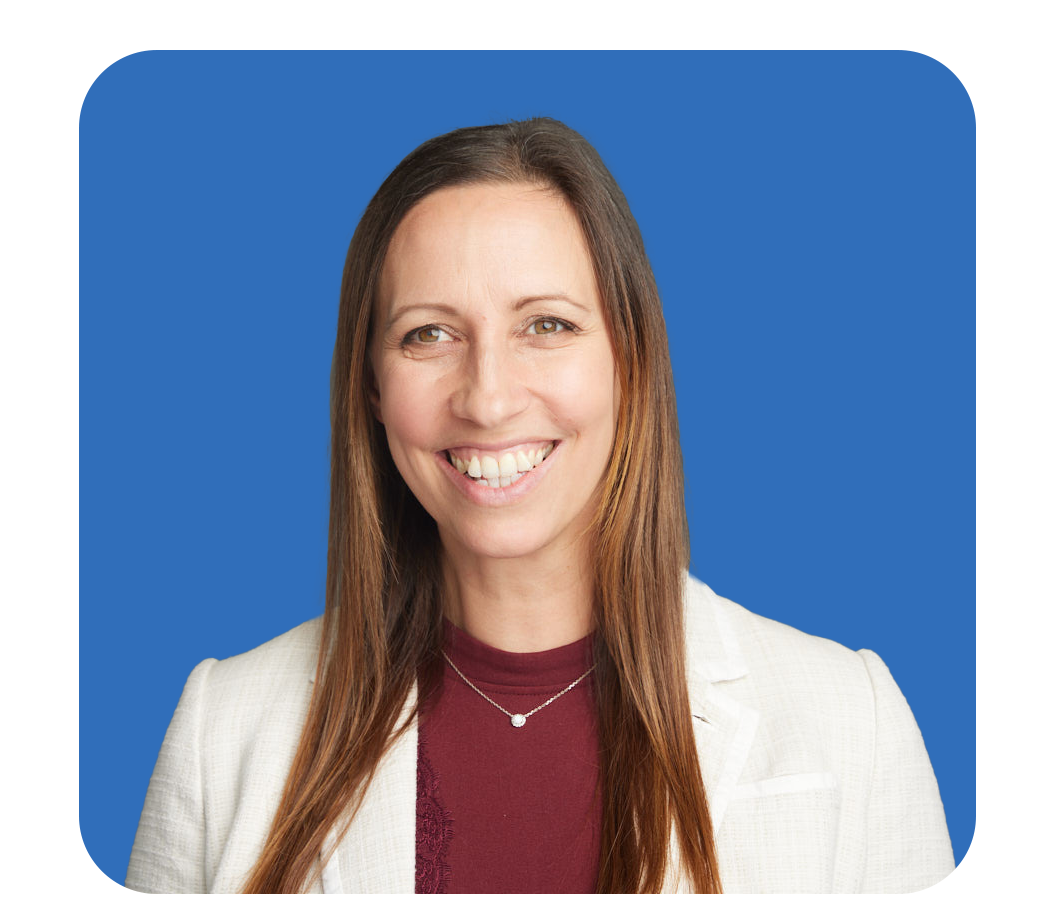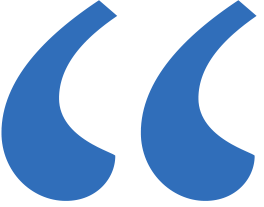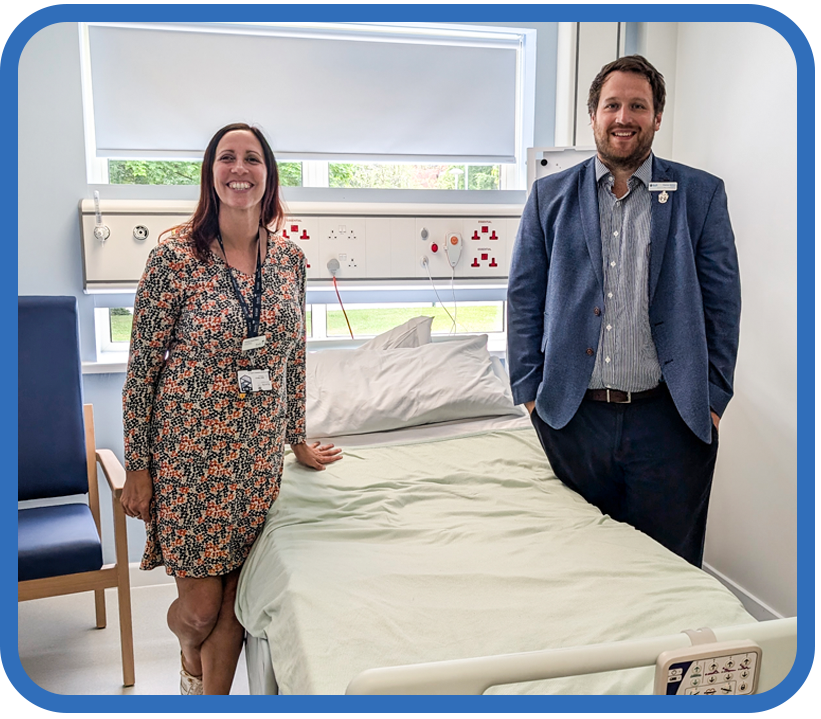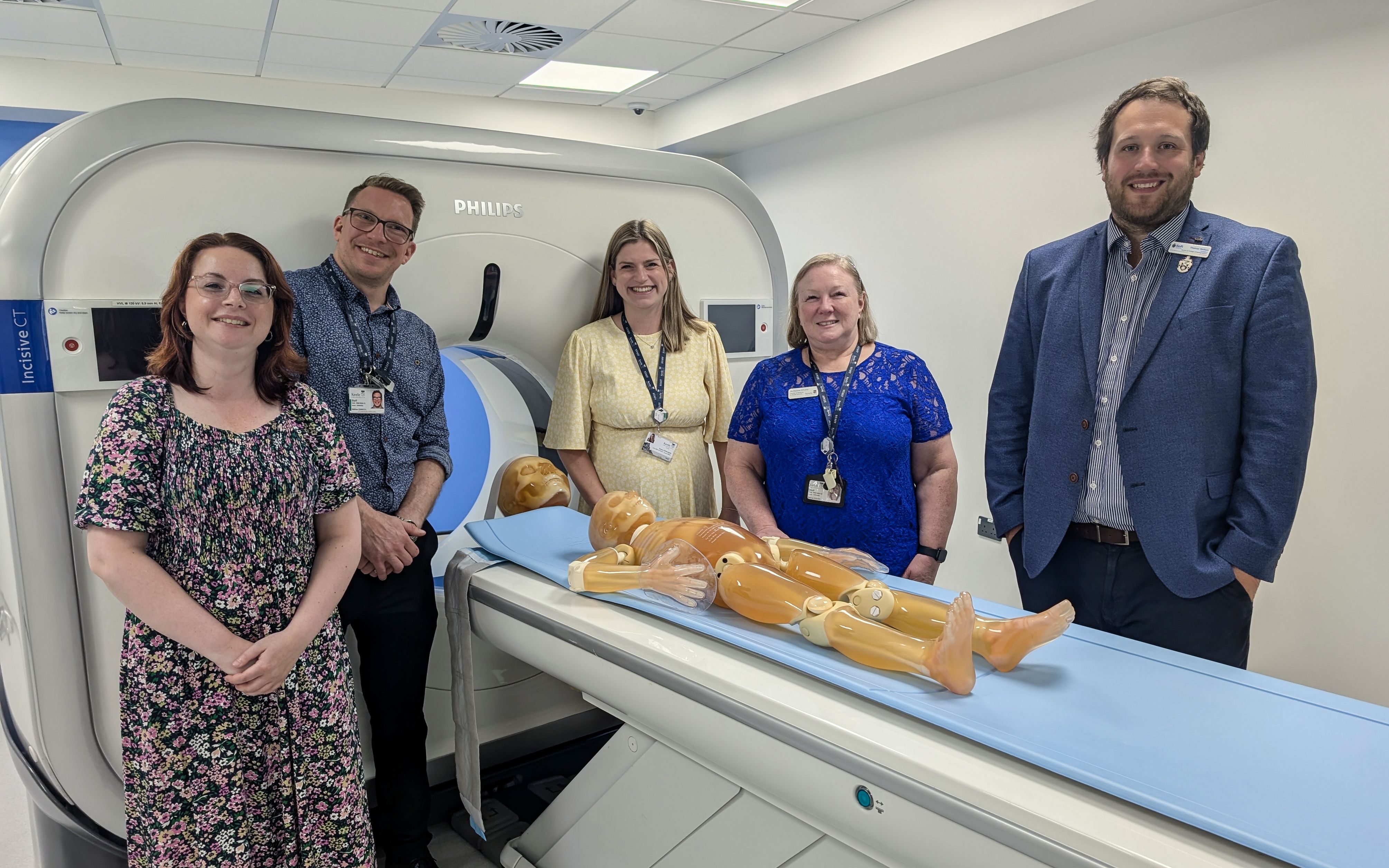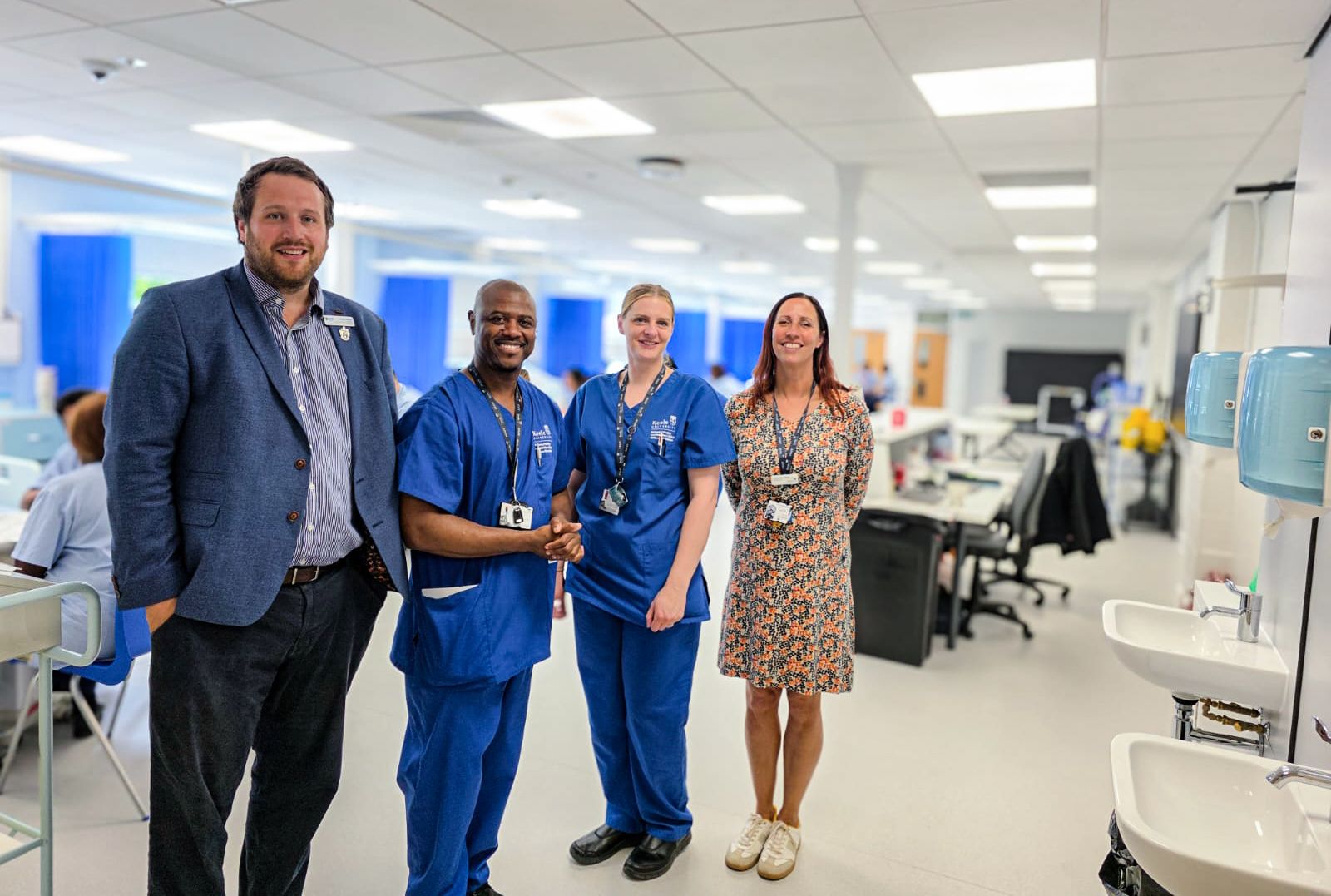Keele radiography shines: a new simulation centre, student success and a presidential visit
With so much exciting innovation taking place at Keele University, the Society of Radiographers visited the team there to see the developments first-hand
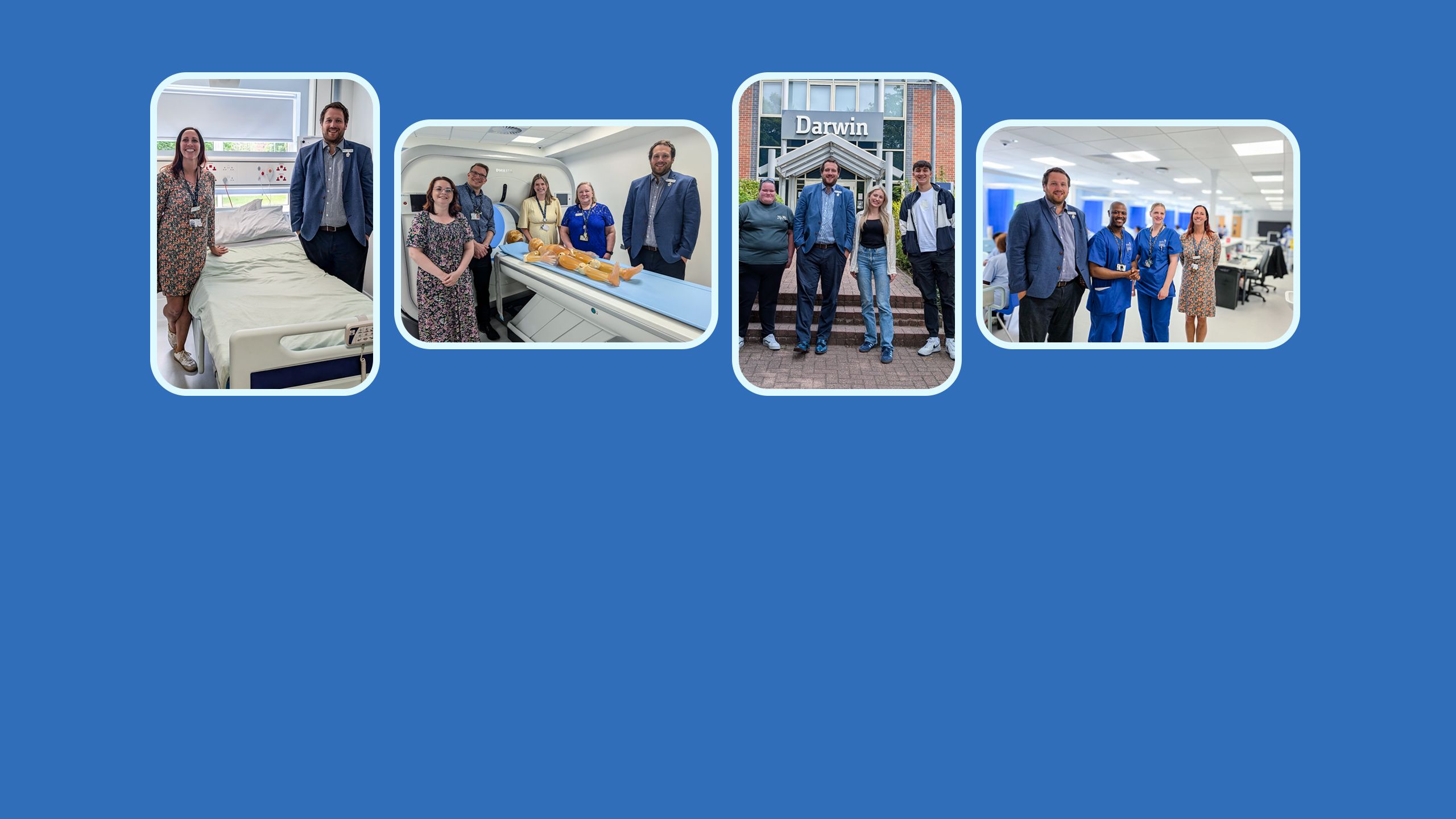
Keele University’s radiography staff and students are celebrating a remarkable year of innovation, achievement and recognition, capped off by a special visit in June from the president of the Society of Radiographers, Tom Welton.
At the heart of this success is the opening of a state-of-the-art, multimillion-pound simulation centre for the Faculty of Medicine and Health Sciences. This bespoke facility features cutting-edge equipment including a new Philips computed tomography (CT) scanner, a fully equipped operating theatre, digital mobile equipment, two neonatal incubators, a digital X-ray room, a virtual reality lab offering six stations, five consultation rooms, two six-bedded wards and a comprehensive activities of daily living suite. The radiography students have access to three adult X-ray phantoms, a child (SPA) phantom and a neonate phantom. Each offers the students the opportunity to undertake live imaging and identify pathologies; this is particularly useful in CT and is complemented by a full suite of computers dedicated to post-processing images. And it doesn’t stop there! The wards are populated with phantoms that truly represent our diverse population, with various ethnicities, body habitus and learning disabilities. This is helping students consider cultural differences as well as adaptations to their practice. The building is fully integrated with cameras, microphones and speakers, enabling remote observation, facilitation and debriefing – enhancing the learning experience for both students and staff.
The radiography programme has embraced this new environment by expanding simulation-based learning embedded across the curriculum. Students now engage with a wide range of simulation modalities, including virtual reality, high-fidelity scenarios, gamification and the use of phantoms and part-task trainers. These immersive interprofessional experiences allow students to blend technical skills with person and family-centred care in realistic, supportive settings. Several of the radiography staff – Emma Edwards, Jessica Roberts, Dr Desiree O’Leary, Joanne Driver and Lisa Ford – have disseminated these innovations in simulation training at regional, national and international conferences, including presence at UK Imaging & Oncology conference (UKIO) and the European Congress of Radiology.
In collaboration with the faculty simulation team, led by me, the radiography team has responded to student feedback by designing innovative, real-time simulations. Standout initiatives include a ‘day in the life’ of a radiographer event, featuring 12 concurrent scenarios, focusing on equality, diversity and inclusion with scenarios involving real service users with learning difficulties, and lastly interprofessional collaboration with paramedic students.
Keele University’s radiography staff and students are celebrating a remarkable year of innovation, achievement and recognition, capped off by a special visit in June from the president of the Society of Radiographers, Tom Welton.
At the heart of this success is the opening of a state-of-the-art, multimillion-pound simulation centre for the Faculty of Medicine and Health Sciences. This bespoke facility features cutting-edge equipment including a new Philips computed tomography (CT) scanner, a fully equipped operating theatre, digital mobile equipment, two neonatal incubators, a digital X-ray room, a virtual reality lab offering six stations, five consultation rooms, two six-bedded wards and a comprehensive activities of daily living suite. The radiography students have access to three adult X-ray phantoms, a child (SPA) phantom and a neonate phantom. Each offers the students the opportunity to undertake live imaging and identify pathologies; this is particularly useful in CT and is complemented by a full suite of computers dedicated to post-processing images. And it doesn’t stop there! The wards are populated with phantoms that truly represent our diverse population, with various ethnicities, body habitus and learning disabilities. This is helping students consider cultural differences as well as adaptations to their practice. The building is fully integrated with cameras, microphones and speakers, enabling remote observation, facilitation and debriefing – enhancing the learning experience for both students and staff.
The radiography programme has embraced this new environment by expanding simulation-based learning embedded across the curriculum. Students now engage with a wide range of simulation modalities, including virtual reality, high-fidelity scenarios, gamification and the use of phantoms and part-task trainers. These immersive interprofessional experiences allow students to blend technical skills with person and family-centred care in realistic, supportive settings. Several of the radiography staff – Emma Edwards, Jessica Roberts, Dr Desiree O’Leary, Joanne Driver and Lisa Ford – have disseminated these innovations in simulation training at regional, national and international conferences, including presence at UK Imaging & Oncology conference (UKIO) and the European Congress of Radiology.
In collaboration with the faculty simulation team, led by me, the radiography team has responded to student feedback by designing innovative, real-time simulations. Standout initiatives include a ‘day in the life’ of a radiographer event, featuring 12 concurrent scenarios, focusing on equality, diversity and inclusion with scenarios involving real service users with learning difficulties, and lastly interprofessional collaboration with paramedic students.
The innovation and quality of the simulations being designed and delivered through our interprofessional teams is providing students with high-quality, meaningful experiences. We all continue to learn from each other – Professor Naomi Shiner
Professor Naomi Shiner and Tom Welton in a ward side room
Professor Naomi Shiner and Tom Welton in a ward side room
Jessica Roberts, Dr Matthew Dimmock, Emma Edwards, Dr Desiree O’Leary and Tom Welton in front of the new CT scanner
Jessica Roberts, Dr Matthew Dimmock, Emma Edwards, Dr Desiree O’Leary and Tom Welton in front of the new CT scanner
Student achievements have also been a highlight of the year. During the presidential visit, three students had the opportunity to meet with Tom in a session dubbed ‘Time with Tom’, where they discussed their academic journeys and future careers. Among them was third-year student Kacper Budyn, who presented his innovative simulation gamification project at the UKIO conference, demonstrating significant improvements in image interpretation and assessment outcomes. Fellow third-year student Jess Smith, one of only two students awarded an NIHR internship, completed a project on Cone Beam CT and developed a user guide, which she presented at both UKIO and the NIHR Research Conference.
Fran Dixon (2nd year student), Jess Smith (3rd year student) and Kacper Budyn (3rd year student) oustide of the Darwin building
Fran Dixon (2nd year student), Jess Smith (3rd year student) and Kacper Budyn (3rd year student) oustide of the Darwin building
Simulation at Keele University has been valuable in developing my practical skills and building confidence in a safe learning environment, enabling me to apply theoretical knowledge to real-world scenarios and therefore preparing me for clinical placements. Meeting the president of the SoR was a highlight of my journey, as Tom provided helpful career insights, helped me understand the future of the profession and enabled me to share my achievements and aspirations – Jess Smith
Meanwhile, Fran Dixon made the most of her experience at UKIO, supported by a College of Radiographers student grant.
It was great to talk all things simulation with Tom. To see where simulation is heading in the future and the areas that need advancing to improve students’ experience – Fran Dixon
Simulation at Keele University has been valuable in developing my practical skills and building confidence in a safe learning environment, enabling me to apply theoretical knowledge to real-world scenarios and therefore preparing me for clinical placements. Meeting the president of the SoR was a highlight of my journey, as Tom provided helpful career insights, helped me understand the future of the profession and enabled me to share my achievements and aspirations – Jess Smith
Meanwhile, Fran Dixon made the most of her experience at UKIO, supported by a College of Radiographers student grant.
It was great to talk all things simulation with Tom. To see where simulation is heading in the future and the areas that need advancing to improve students’ experience – Fran Dixon
Fran Dixon (2nd year student), Jess Smith (3rd year student) and Kacper Budyn (3rd year student) oustide of the Darwin building
Fran Dixon (2nd year student), Jess Smith (3rd year student) and Kacper Budyn (3rd year student) oustide of the Darwin building
Tom Welton, El-Musa Pujeh (nursing team), Becky Nicholls (nursing team) and Professor Naomi Shiner in front of the six-bedded ward
Tom Welton, El-Musa Pujeh (nursing team), Becky Nicholls (nursing team) and Professor Naomi Shiner in front of the six-bedded ward
These accomplishments have helped Keele’s radiography programme earn a place among the top five in England, according to the Complete University Guide – an achievement that underscores the team’s dedication and excellence.
Tom’s visit was a fitting celebration of these milestones. He toured the new simulation facilities, explored Keele’s expansive campus and spent time with both the radiography and nursing teams, observing first-year nursing students in simulated practice. His visit not only recognised the programme’s success but also inspired students and staff alike to continue pushing the boundaries of healthcare education.
More about simulation
As part of the NHS England Professional Bodies Education Reform Commission, the SoR has been exploring the use of simulation to support diagnostic radiography pre-registration education. The aim of the project was to determine the efficacy of simulation.
To find out more about this project and the other workstreams, visit the NHS hub page.
Read more



